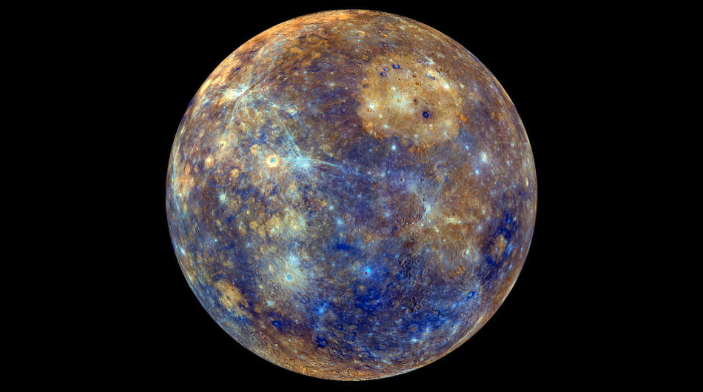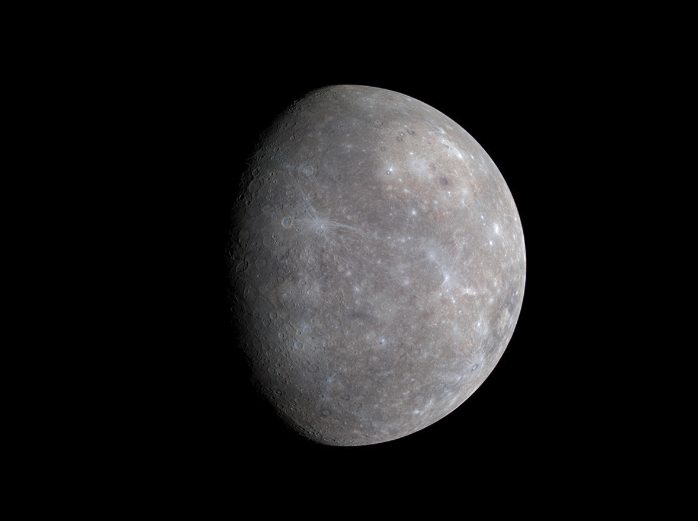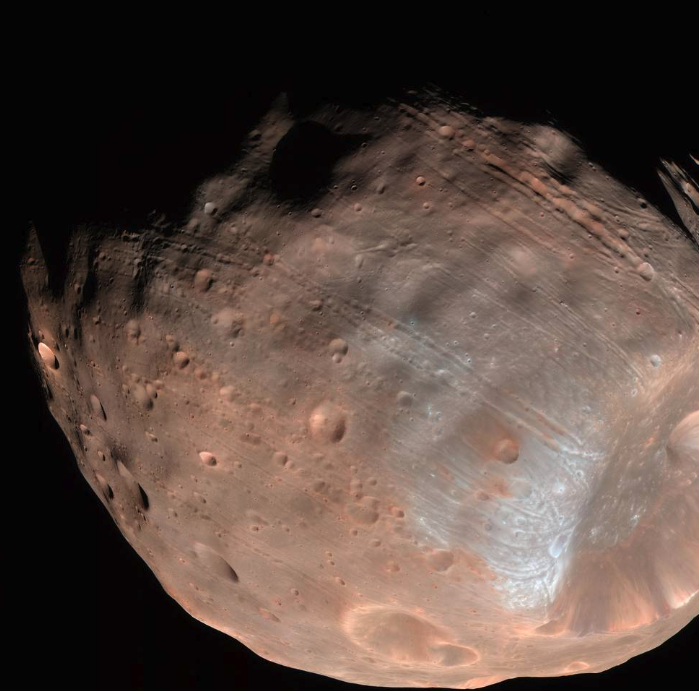How Many Moons Does Mercury Have?
Imagine standing in our backyard on Mercury and looking at the night skies. How many moons does Mercury have? Zero! Mercury has no moons of its own. There are two moonless planets in our solar system, Mercury and Venus.
Since recorded history began, humans could gaze at Earth’s Moon each night. It’s all we know! Our solar system has 207 moons. It’s hard to imagine a planet without a single moon!
The lack of moons is likely due to Mercury’s proximity to the Sun. If a large object drew close enough to Mercury to become its satellite, the Sun would likely snatch it up into its gravity field. Diving deeper into why some planets have many moons and others have none gives us a better understanding of Mercury’s isolated orbit.

Table of Contents
What Is A Moon?
Scientists often interchange the words “moon” and “satellite.” However, a moon, or natural satellite, is an object that orbits a planet or dwarf planet. These satellites might be regular or irregular.
While more than 200 moons exist in our solar system, only 164 are “confirmed.” Jupiter has 23 provisional moons, and Saturn has 20. That means some satellites are waiting on additional confirmation from more observations. Then, once a moon is confirmed, it is assigned a name beyond its provisional designation.
Regular Moons
Regular moons were once a part of the planets they now orbit. For example:
- A planet is hit by an asteroid or comet
- A portion of the planet is split off or cleaved off when the object strikes the planet
- The split or cleaved fragment is ejected into space
- The ejected material begins to orbit around the plant
- The ejected material collects together as it obits and forms a moon
- Earth’s Moon is one example of a regular moon.

How Are Natural Satellites Formed?
Natural satellites are formed in three ways:
- Massive collisions break off a piece of the planet, like Earth’s Moon.
- The planet captures a smaller object, forcing it into the planet’s gravitational orbit, like Neptune’s Triton.
- Satellites form out of circumplanetary disks that orbit a planet.
- Circulplanetary disk composition:
- Debris, gas, dust, asteroids, or comets.
- Circulplanetary disk shapes:
- Donut
- Pancake
- Ring-shaped
- Circulplanetary disk composition:
Example: Proteus likely formed during the Moon Triton’s capture when debris floated freely and multiple objects combined into a larger body. IF Proteus continues to collect circumplanetary material during its orbit, it will gain mass. IF Proteus has more mass, it may begin the transition from a box-shaped moon to a sphere-shaped moon.
Irregular Moons
Asteroids or comets that were captured by the planet’s gravitational pull are classified as irregular moons. For example, Neptune’s largest Moon, Triton, likely belonged to the Kuiper Belt. It’s a region of icy objects beyond Neptune belonging to the early solar system.
Mercury’s Characteristics
Mercury has a thin atmosphere with little ability to protect the planet from asteroid and comet strikes. Its surface is cratered and pockmarked, similar to our Moon.
Mercury is terrestrial. That means it primarily comprises silicate rocks in its crust and metals in its core. Mercury’s core is mostly iron.
By size and mass, Mercury is the solar system’s smallest planet. Because it is very small, its gravitational pull is too weak to grasp and hold anything in its orbit.
Additionally, Mercury’s proximity to the Sun means it yields any objects to the Sun’s stronger gravitational pull.
So, there are two main reasons Mercury has no natural satellites.
- Too small to have a strong gravitational pull.
- The Sun’s gravity pulls objects away from the planet and into its own orbit.
Moons of the Inner Planets
Our solar system has four inner planets (Mercury, Venus, Earth, and Mars) and four outer planets (Jupiter, Saturn, Uranus, and Neptune). The inner planets are closest to the Sun, with slower orbits and the fewest moons.
Mercury-0
So how many moons does Mercury have? The answer is zero! Mercury has no moons. Neither does Venus. These two planets are the closest to the Sun, whose gravitational pull greatly exceeds their own. Any/All potential objects that could create a moon are pulled into the Sun’s orbit.
Venus-0
Venus is significantly larger than Mercury. It is almost 80% of Earth’s size with a significant gravitational field. Scientists think Venus likely did have a moon in the past. Positioned anywhere else in the solar system, Venus could probably hold a moon in orbit. But currently, the Sun’s pull outpowers it.
Earth – 1
Our Moon is approximately 27% of Earth’s size, which is a more significant percentage than any other moon to its planet in our solar system. As a result of its size, Earth’s Moon has a much more substantial impact on our planet than any other moon has on its “own” planet.
For example, the Moon is the largest observable object in our night sky. The Moon’s gravity impacts Earth’s ocean tides. Calendar months are the approximate time for the Moon to cycle through all its phases. The Moon has seasonally guided humans throughout time.
Mars – 2
Mars doesn’t have spherical moons like ours. Instead, its two moons are lumpy and dark. However, they travel close to their planet’s equator in a circular orbit.
Moons of the Outer Planets
The outer planets of our solar system are gas or ice giants. As these planets grew, they collected satellites from smaller, natural discs (circumplanetary) of gas and dust. But, as you read above, some moons also form when comets and asteroids impact the planet, breaking off pieces.
Jupiter – 80
Jupiter’s four largest moons got their names in 1610 after their discovery by Galileo Galilei. Its Moon, Europa, may have a habitable zone. NASA plans a Europa Clipper mission in October 2024 for further investigation.
Saturn – 83
Saturn’s moons and rings are closely connected. The moons take material from the rings, even as they contribute material to them. Saturn’s rings become partly shaped from its moons.
Some of Saturn’s moons are spherical, while others are shaped like potatoes, sweet potatoes, meatballs, and sponges. Now that’s an eclectic group!
Uranus – 27
Unlike most solar system moons, named after Greek and Roman mythologies, Uranus’ moons take their names from Shakespeare’s characters. In addition, some are named after the characters of Alexander Pope.
Neptune – 14
As the furthest planet from the Sun, Neptune gathers some of its moons from the nearby Kuiper Belt. This ice giant also has the largest Moon in our solar system that travels in a retrograde orbit.
How Many Moons Does Mercury Have?
In the quest to learn how many moons does Mercury have, we’ve found that it has zero moons! Mercury’s small size, hill sphere, weak gravity, and proximity to the Sun’s immense gravity field add up to no moons. Any moon considered a “potential” Moon of Mercury is pulled into the Sun’s orbit.

